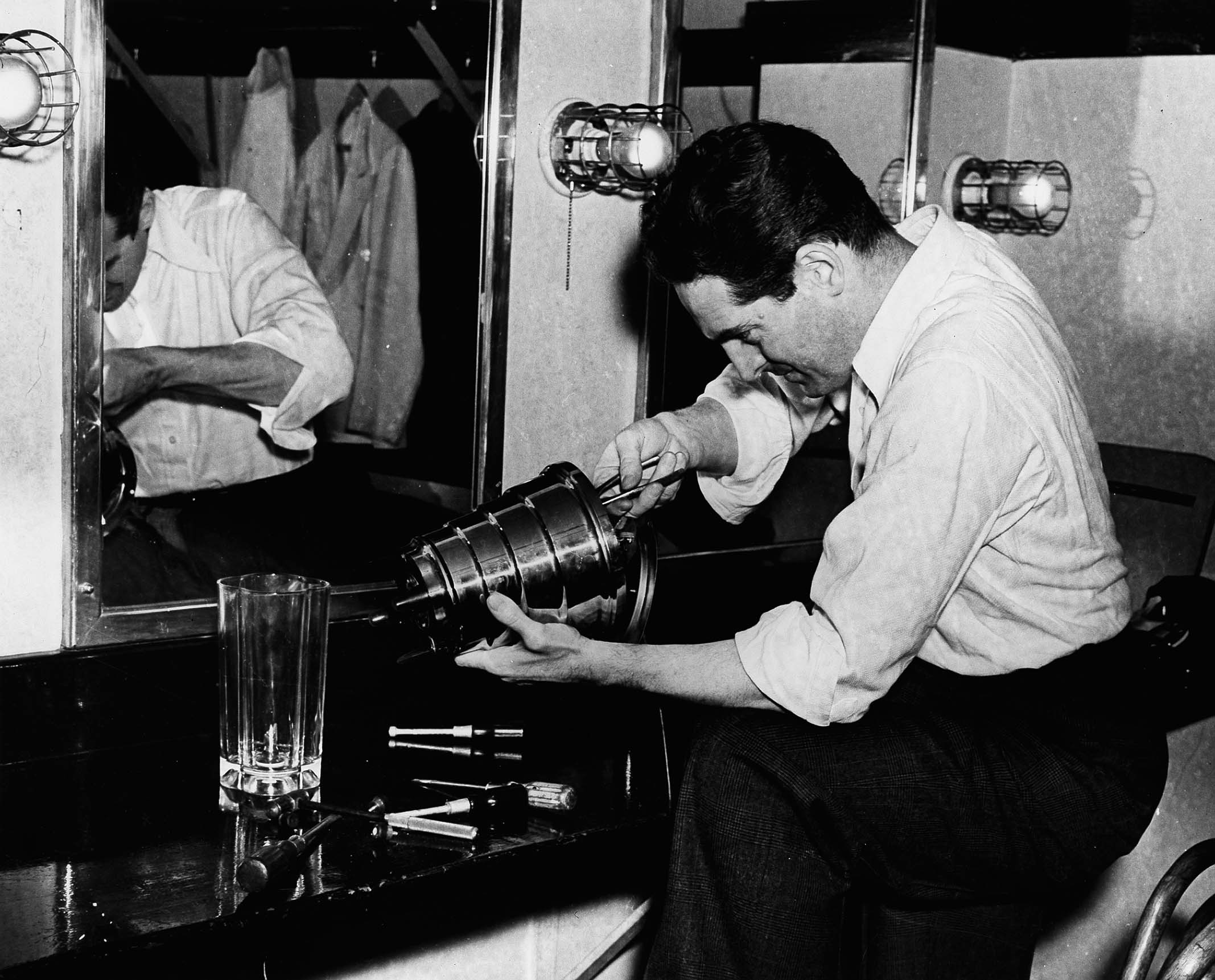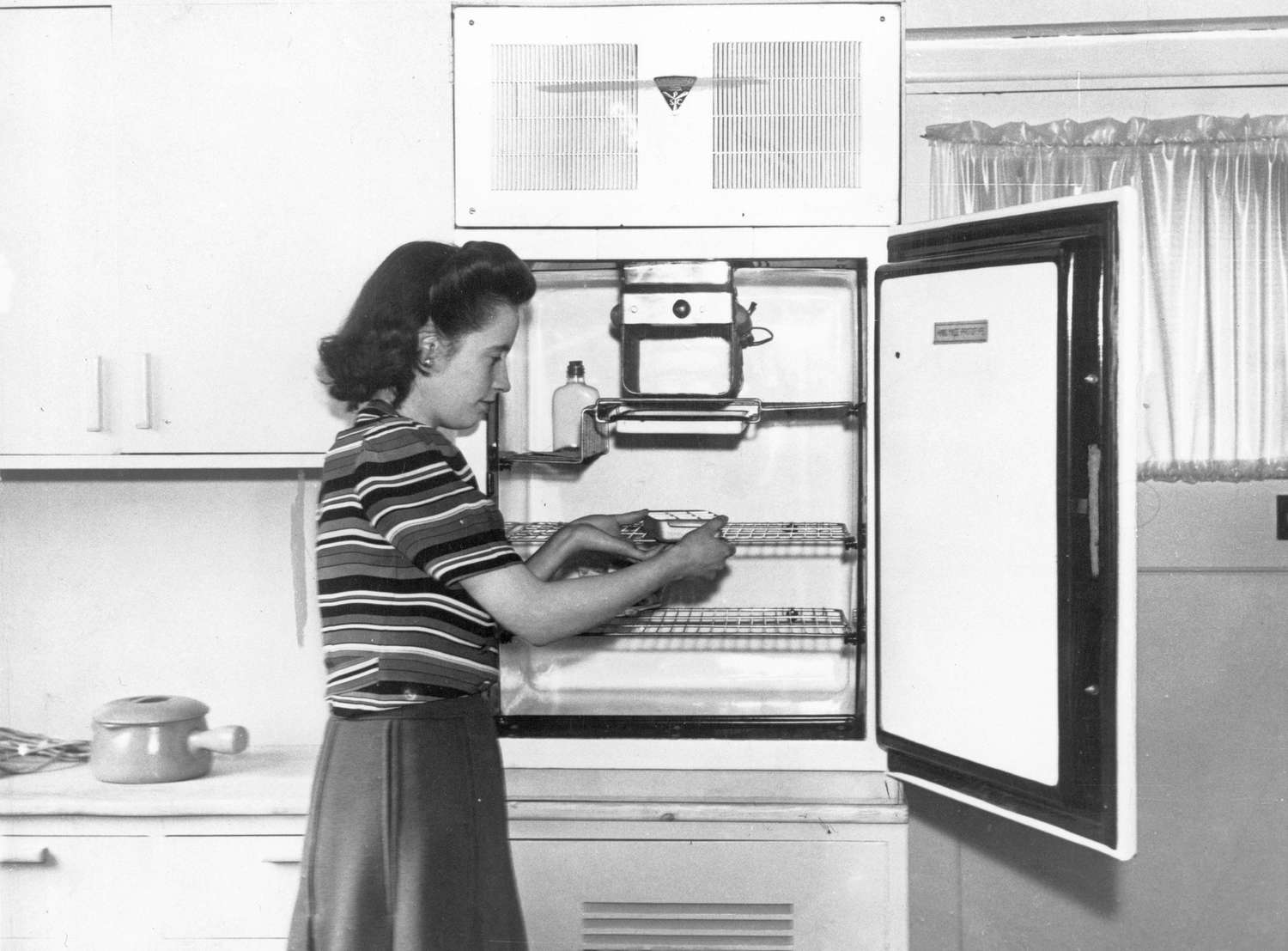

Articles
When Was Blender Invented
Modified: January 19, 2024
Learn about the fascinating history of Blender and its invention in this collection of insightful articles. Discover when this groundbreaking software was first developed and revolutionized the world of 3D animation.
(Many of the links in this article redirect to a specific reviewed product. Your purchase of these products through affiliate links helps to generate commission for Storables.com, at no extra cost. Learn more)
Introduction
In the world of computer animation, Blender has emerged as a powerful and versatile software that has revolutionized the industry. But have you ever wondered when this incredible tool was first invented? In this article, we will take a journey through time to explore the birth and evolution of Blender. From its humble beginnings to its current status as a popular open-source software, Blender has come a long way, impacting the world of 3D graphics and animation.
Blender is a free and open-source 3D creation suite that provides a wide range of tools for modeling, sculpting, rendering, and animating. But before it became the powerhouse that it is today, Blender had a rather unusual origin story that sets it apart from other software in its league.
The story of Blender begins in the early 1980s when Ton Roosendaal, a Dutch software developer and designer, started working on a program called ‘Traces.’ This early version of Blender allowed users to create simple shapes on a computer screen. However, it lacked the capabilities and features that we associate with modern-day 3D software.
Over the years, Roosendaal continued to work on and improve the program, eventually renaming it ‘Blender’ in 1994. The name was inspired by a song called “Samba Triste” by Brazilian musician Jorge Ben Jor, which Roosendaal found fitting for the creative and fluid nature of the software he was developing.
With its new name, Blender gained recognition in the computer graphics and animation community. It caught the attention of NeoGeo, a Dutch animation studio, which saw the potential in the software and invested in its development. The collaboration with NeoGeo proved to be a turning point for Blender, as it paved the way for further advancements and innovations.
However, the journey for Blender was not all smooth sailing. In 2000, following financial difficulties, NeoGeo discontinued its support for the software, leaving Blender’s future uncertain. But this setback only fueled the determination of Ton Roosendaal and other passionate developers who believed in the power of Blender.
In a groundbreaking move, Ton Roosendaal launched the Blender Foundation in 2002 with the goal of making Blender fully open-source. This decision was met with enthusiasm from the Blender community and marked the beginning of a new era for the software. By embracing an open-source model, Blender became accessible to a wider audience and attracted a community of developers and artists who contributed to its growth.
Since then, Blender has continued to evolve and improve with each new release. Its feature set has expanded to include advanced modeling tools, realistic rendering capabilities, a powerful animation system, and even a built-in video editor. The continuous development and support from the community have made Blender a go-to software for professionals and hobbyists alike.
Today, Blender stands as a testament to the power of collaboration, innovation, and the open-source philosophy. It has empowered individuals and organizations to bring their creative visions to life and has become a driving force behind some of the most stunning animations and visual effects in the industry.
In the following sections, we’ll delve deeper into the early years of Blender, the advent of the open-source era, and the remarkable features that make Blender the exceptional software it is today. So, let’s embark on this journey through time and explore how Blender has revolutionized the world of computer animation!
Key Takeaways:
- Blender’s journey from a simple program in the 1980s to a powerful 3D creation suite showcases the impact of determination, innovation, and the open-source model in revolutionizing the world of computer graphics and animation.
- Blender’s versatile feature set, collaborative community, and continuous evolution have democratized 3D graphics and animation, inspiring creativity, transforming industries, and setting a benchmark for the future of software development.
Read more: When Was The Bathtub Invented
The Birth of Blender
The birth of Blender can be traced back to the early 1980s when Ton Roosendaal started developing a program called ‘Traces’. This initial version of Blender allowed users to create basic shapes on a computer screen, laying the foundation for what would become an influential software in the world of 3D graphics and animation.
As Roosendaal continued to work on the program, adding new features and functionalities, he renamed it ‘Blender’ in 1994. The name itself, derived from a song called “Samba Triste” by Jorge Ben Jor, epitomized the fluid and creative nature of the software.
Blender caught the attention of NeoGeo, a Dutch animation studio, which recognized its potential and decided to invest in its development. This collaboration marked a significant turning point for Blender as it opened up new avenues for growth and innovation.
Under the financial backing of NeoGeo, Blender underwent substantial improvements and gained recognition in the computer graphics and animation community. It became known for its unique feature set, including its powerful modeling tools and animation capabilities.
However, in 2000, NeoGeo faced financial difficulties and had to discontinue its support for Blender. This setback could have spelled the end for the software, but Ton Roosendaal and his team were determined to keep it alive.
Instead of giving up, Roosendaal took a remarkable step by establishing the Blender Foundation in 2002. The foundation aimed to transform Blender into a fully open-source software, making it accessible to a wider audience and fostering collaboration among developers and artists.
This decision to embrace the open-source model turned out to be a game-changer for Blender. It attracted a passionate community of developers who worked tirelessly to improve the software and enhance its capabilities. The open-source nature of Blender allowed for a faster pace of development and ensured that the software remained relevant and cutting-edge.
The Blender Foundation also played a pivotal role in connecting artists and developers, creating a platform for collaboration and knowledge sharing. This vibrant community contributed to the growth and evolution of Blender, with artists pushing the boundaries of what could be achieved with the software.
Since its transformation into an open-source software, Blender has flourished. Its user base has expanded exponentially, and it is now widely used by professionals and enthusiasts alike. It has gained recognition in various industries, including film, gaming, architecture, and advertising, thanks to its powerful and versatile feature set.
Today, Blender continues to evolve with regular updates and new features being added with each release. Its intuitive interface, extensive documentation, and strong community support make it an attractive choice for artists and animators who want to bring their creative visions to life.
In the subsequent sections, we will explore the early years of Blender further, the advent of the open-source era, and delve into the remarkable features that make Blender a powerhouse in the world of 3D graphics and animation.
The Early Years of Blender
The early years of Blender were marked by continuous development, as Ton Roosendaal and his team worked tirelessly to enhance the software and push its capabilities to new heights. During this time, Blender underwent significant changes and became increasingly recognized as a powerful tool for 3D graphics and animation.
One of the defining features of Blender during its early years was its unique interface. Unlike other software of its time, Blender featured a non-traditional, but highly efficient, interface known as “hotkey-driven” or “keyboard-centric” interface. This approach allowed users to access various tools and functionalities quickly, enabling a more streamlined workflow. While it may have had a steep learning curve initially, this interface has become one of the distinguishing factors of Blender.
Blender also stood out for its innovative modeling capabilities. It offered a range of modeling tools, including polygonal modeling, NURBS (non-uniform rational basis splines) modeling, and subdivision modeling. These tools allowed artists to create complex and detailed 3D models with precision and flexibility.
In addition to modeling, Blender also introduced a powerful animation system. It provided features like keyframe animation, inverse kinematics, and character rigging, enabling animators to bring their creations to life with smooth and realistic movements.
Another notable aspect of the early years of Blender was its emphasis on interactivity and real-time rendering. Blender allowed users to see the changes they made to their models and scenes in real-time, thanks to its efficient rendering engine. This feature proved invaluable for artists who sought immediate feedback and visualization of their work.
As Blender gained popularity, it attracted attention from not only individual artists but also studios and educational institutions. Its affordability, combined with its broad range of features, made it a highly sought-after tool for both professionals and beginners.
Blender’s growth and influence during this period were also driven by its active user community. Artists and developers from around the world came together to share their knowledge, provide feedback, and contribute to the ongoing development of Blender. This collaborative spirit helped shape the software and ensured its constant improvement.
However, despite its advancements, Blender faced financial challenges in the late 1990s and early 2000s. It was during this time that NeoGeo, the animation studio that had been supporting Blender’s development, had to discontinue its backing. This setback could have spelled the end for Blender, but Ton Roosendaal’s determination to keep the software alive led to the establishment of the Blender Foundation.
In 2002, the Blender Foundation was founded with the goal of transforming Blender into an open-source software. This move allowed Blender to transcend its limitations and reach new heights by harnessing the power of collaboration and community support.
The early years of Blender laid a strong foundation for the software’s future success. The innovative approaches to interface design, modeling, animation, and interaction set Blender apart from other 3D software of its time. These early developments formed the building blocks upon which Blender continues to evolve and thrive today.
In the next section, we will explore the dawn of the open-source era and the profound impact it had on the growth and development of Blender.
Blender was invented in 1995 by Ton Roosendaal in the Netherlands. It was initially developed as an in-house tool for a Dutch animation studio before being released as open-source software in 2002.
The Open Source Era
The launch of the Blender Foundation in 2002 marked a turning point for Blender as it embarked on its journey into the open-source era. This shift in direction had a profound impact on the software and its community, paving the way for Blender’s widespread recognition and continued development.
By embracing the open-source model, Blender became accessible to a wider audience and fostered a spirit of collaboration among developers, artists, and enthusiasts. The decision to make Blender open-source not only allowed for greater transparency and flexibility but also encouraged innovation and rapid development.
With the source code freely available, developers from around the world were able to contribute to Blender’s growth and improvement. This community-driven approach led to the expansion of features, bug fixes, and the implementation of industry-standard workflows – all driven by the passion and expertise of the Blender community.
The open-source nature of Blender also led to the establishment of several specialized branches and add-ons. These extensions provided additional tools, functionalities, and customizations that catered to a wide range of user needs. From architectural visualization to character animation, Blender’s open-source ecosystem allowed for the adaptation and expansion of the software for various industries and purposes.
The Blender Foundation also played a crucial role in fostering collaboration and supporting the community. It organized conferences, workshops, and training programs, bringing together developers, artists, and users to exchange ideas, showcase their work, and learn from each other. This vibrant community-centric approach helped strengthen the bond between Blender users and contributed to the ongoing growth and refinement of the software.
Moreover, the open-source nature of Blender fostered a culture of sharing and learning. Artists and animators could freely access tutorials, documentation, and resources created and shared by the Blender community. This accessibility contributed to the democratization of 3D graphics and animation, allowing individuals from all walks of life to explore and express their creativity.
The open-source era also propelled Blender into the realms of industry relevance. As the software continued to evolve and mature, its capabilities rivaled those of commercial 3D software. Studios, professionals, and educational institutions began to recognize the power and potential of Blender, incorporating it into their pipelines and curricula.
Blender’s open-source model also attracted corporate sponsorship and funding, further ensuring its continued development and support. Large companies such as Epic Games, NVIDIA, and AMD have recognized the value of Blender and have contributed resources and expertise to propel its growth.
Today, Blender stands as a testament to the power of open-source software. It has transcended its humble beginnings to become a widely respected and adopted tool in the field of 3D graphics and animation. Its vibrant community, remarkable capabilities, and continuous development highlight the vast potential of collaborative innovation.
In the next section, we will explore the evolution of Blender’s features and its transformation into a versatile and powerful 3D creation suite.
Blender’s Evolution and Features
Since its inception, Blender has undergone a remarkable evolution, continually expanding its range of features and capabilities. Let’s dive into the key milestones and standout features that have made Blender a powerhouse in the world of 3D graphics and animation.
Modeling Tools: Blender offers a comprehensive set of modeling tools that allow artists to create complex and detailed 3D models. From polygonal modeling for organic shapes to NURBS modeling for precise curves and surfaces, Blender provides a versatile toolkit to bring imagination to life.
Animation System: Blender’s animation system enables artists to create captivating and realistic animations. With keyframe animation, inverse kinematics, and character rigging, Blender empowers animators to give life and movement to their creations.
Real-Time Rendering: Blender’s rendering engine provides real-time feedback, allowing artists to see changes to their scenes and models instantly. This feature greatly enhances the productivity and creative process by eliminating the need for time-consuming test renders.
Texturing and Shading: Blender offers robust texturing and shading capabilities, allowing artists to create intricate and realistic materials. With its node-based shader editor, artists can achieve stunning visuals by combining textures, shaders, and effects in a highly customizable and intuitive workflow.
Simulation and Physics: Blender’s simulation tools enable the creation of realistic physics-based effects such as cloth, fluid, smoke, and rigid body simulations. These features open up a wide range of possibilities for creating dynamic and immersive animations and visual effects.
Compositing and Video Editing: Blender includes a powerful compositing and video editing suite, making it a complete 3D creation package. Artists can seamlessly integrate 3D elements into live-action footage and perform advanced post-processing tasks, all within the Blender environment.
Sculpting and 3D Painting: Blender’s sculpting tools allow artists to sculpt organic shapes and details directly in the software. Additionally, the 3D painting features enable artists to paint textures and directly apply them to their models, streamlining the creative workflow.
Simulation and Physics: Blender’s simulation tools enable the creation of realistic physics-based effects such as cloth, fluid, smoke, and rigid body simulations. These features open up a wide range of possibilities for creating dynamic and immersive animations and visual effects.
Python Scripting: Blender’s open architecture allows for extensive customization and automation through Python scripting. Artists and developers can script their own tools and add-ons to tailor Blender to their specific needs, making it a flexible and adaptable tool for various workflows.
With each new release, Blender constantly introduces new features, enhancements, and usability improvements based on the feedback and needs of its passionate community. Its commitment to innovation and the open-source philosophy has propelled Blender to become a leading force in the industry.
Blender’s versatility and feature-rich nature have attracted a wide range of professionals, including filmmakers, game developers, architects, product designers, and educators. Its ability to handle complex projects, combined with its intuitive interface and extensive documentation, has made it a favorite among both beginners and experienced users.
Blender’s journey is one of continuous growth and adaptation to the ever-evolving landscape of 3D graphics and animation. With its powerful features and passionate community, Blender will undoubtedly continue to push boundaries, inspire creativity, and shape the future of computer-generated imagery.
In the final section, we will summarize our exploration and reflect on the impact Blender has had on the world of 3D graphics and animation.
Read more: When Was The Frisbee Invented?
Conclusion
Blender has undoubtedly come a long way since its humble beginnings in the early 1980s. From a simple program called ‘Traces’ to a powerful and versatile 3D creation suite, Blender has revolutionized the world of computer graphics and animation.
The birth of Blender, fueled by the determination of Ton Roosendaal, marked the beginning of a remarkable journey. Through continuous development and the introduction of innovative features, Blender gained recognition and appeal in the industry.
The open-source era, initiated by the Blender Foundation, further propelled Blender’s growth and solidified its position as a leading 3D software. The collaborative nature of Blender’s community and the contributions from artists and developers worldwide have been instrumental in shaping its evolution.
Blender’s extensive feature set, including modeling tools, animation systems, real-time rendering, texturing and shading capabilities, simulations, compositing, and Python scripting, make it a complete and powerful 3D creation package.
Throughout its evolution, Blender has empowered artists, professionals, students, and enthusiasts to bring their creative visions to life. Its accessibility, versatility, and continuous development have democratized 3D graphics and animation.
Blender’s impact extends beyond the realm of software – it has transformed industries, inspired new possibilities, and connected a global community of creators. Its open-source philosophy and collaborative ecosystem have set a benchmark for the future of software development.
As Blender continues to grow and innovate, it remains driven by the passion and dedication of its community. Each release brings new features, enhancements, and endless creative potential.
In conclusion, Blender stands as a testament to what can be achieved through collaboration, innovation, and the open-source model. It has empowered countless individuals, fueled the imagination of artists, and revolutionized the world of 3D graphics and animation.
As we look to the future, it’s exciting to imagine the next chapter in Blender’s journey. With its vibrant community, unwavering commitment to excellence, and boundless possibilities, Blender will undoubtedly continue to shape the landscape of 3D graphics and animation for years to come.
Frequently Asked Questions about When Was Blender Invented
Was this page helpful?
At Storables.com, we guarantee accurate and reliable information. Our content, validated by Expert Board Contributors, is crafted following stringent Editorial Policies. We're committed to providing you with well-researched, expert-backed insights for all your informational needs.















0 thoughts on “When Was Blender Invented”